| Miscellaneous & special moon pictures |
| HOME Best Lunar Planets Deepsky Misc Equipment Techniques Links |
| Whole Moons Details Miscellaneous Eclipse 2004 Eclipse 2007 |
| Pictures of the moon that don't fit into the other categories. This page is where I put interesting and varied pictures of the moon under various conditions. |
20 January 2007, Early crescent meets Venus
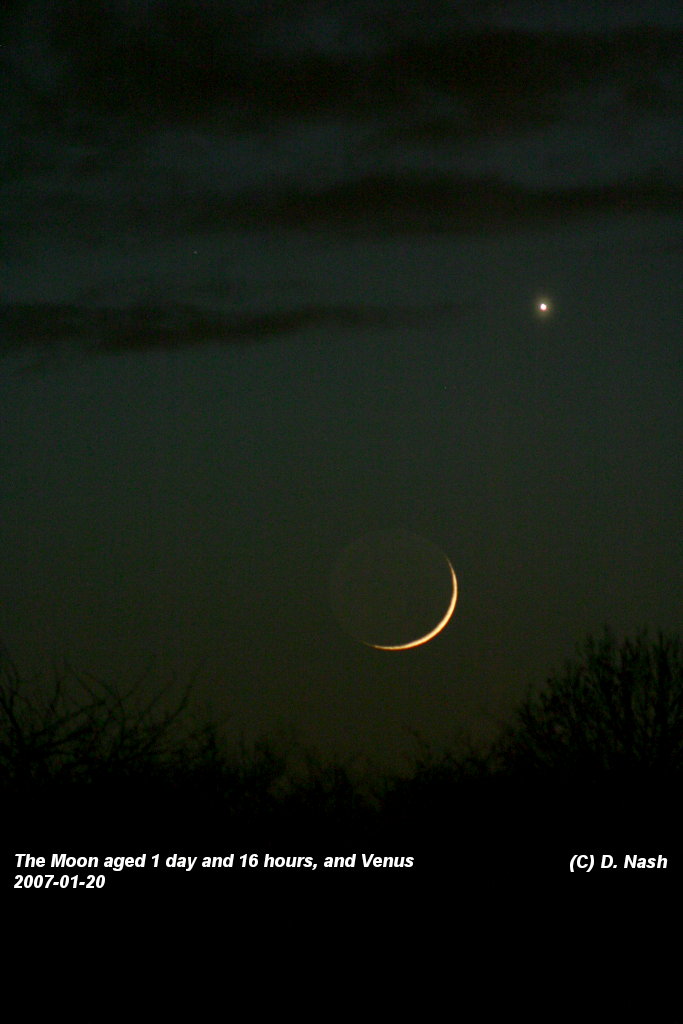
|
On this windy January evening I took my Canon EOS300D camera to farmland where the Western horizon was clear. The camera was fitted with a 300mm lens which gives just the right field of view for this conjunction with Venus.
The camera was set to ISO 800, 1 second exposure. The image was lightly processed using PixInsight LE and The Gimp. To see a closer image of the moon click HERE for a crop from a similar shot, but of 2 seconds. |
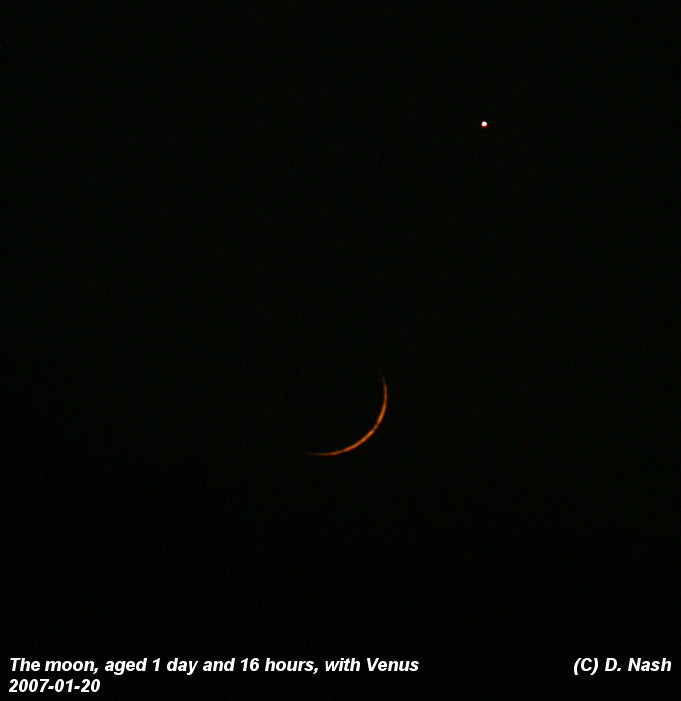
|
The second picture from this occasion was captured with a smaller exposure time, of only 1/5 second. The "Earthshine" cannot be seen but an interesting phenomenon can: The ends of the crescent form a bead-like appearance, caused by the (sun)light shining through, and reflecting off, the surface features of the moon at those points.
This effect is known as Saber's bead, and is reminiscent of the well-known Bailey's Beads seen during an eclipse of the sun. For more information see Stephen Saber's website. |
| to top | home |
17 June 2005, Enhanced colour moon
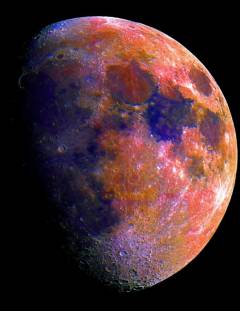
|
Using Filipe Alves technique described in the July 2005 edition of Sky and Telescope, and on his website http://wwww.colormoon.pt.to, I increased the saturation of some moon images captured on 17 June 2005. The resulting images show the geologic make-up of the rock and soil across the moon.
The images are from the mosaic created with my ToUCam PRo on 17 June - see my whole moon mosaic page. The saturation increase and post-processing was done in The Gimp. See also the 18 February 2005 image below. |
| to top | home |
8 June 2005, Thin crescent plus Venus and an aeroplane
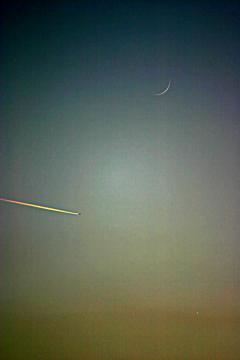
|
I went to a location with a clear western view and captured this image of the 2-day moon with Venus. The Fortuitous appearance of an aircraft made this shot much more interesting!
Captured with my Canon EOS300D DSLR camera set to ISO 125, 1/200 sec exposure. Shot with an 80-200mm zoom lens set to 200mm, aperture f/5.6. Post-processed (resize, unsharp mask, colour levels) in The Gimp. |
| to top | home |
19 May 2005, Conjunction of the Moon and Jupiter
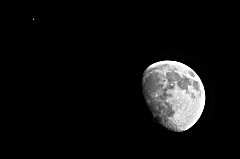
|
On 19 May 2005 the moon passed close by the planet Jupiter, and for a time the sky cleared, enabling me to take a couple of pictures. The image here was captured using my Canon EOS 300D digital SLR camera with an 80-200mm lens set to 200mm. The camera was on fully automatic exposure and aperture for this image. The actual settings used were: ISO 100, 1/60sec exposure, aperture f/5.6. I improved the contrast and sharpness using The Gimp.
I captured another image with the camera on manual settings. This image can be seen HERE For this image the camera was left on ISO 800 (from last time I used it) and I chose an aperture of f/5.6 and an exposure time of 1/640 sec. Contrast the short exposure time at ISO 800 with the much longer one at ISO 100 above! |
| to top | home |
10 April 2005, Earthshine on 2-day-old moon
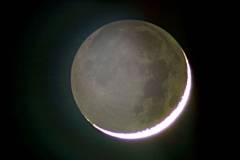
|
This picture shows the effect of the unlit part of the bright crescent moon when it is illuminated by moonlight reflected back from the Earth. This light, known as "Earthshine", can only be seen when the brightly illuminated portion of the moon is a small crescent, as in this 2-day picture. The crescent is overexposed in order that the dim earthshine can be seen
This picture is a single frame captured with a Canon EOS 300D digital SLR camera attached via a Barlow lens to my 80mm f/5.0 refractor. Levels were adjusted and sharpening applied in Pleiades PixInsight-LE and The Gimp. |
| to top | home |
18 February 2005, Enhanced Colour
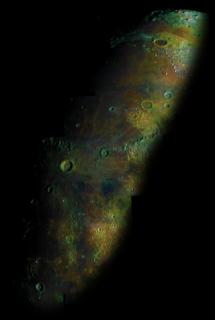
|
This very strange-looking picture of the Mare Imbrium region, has had the colour saturation enhanced using the technique described by Filipe Alves in his web page. The result shows the different soil compositions and the geologial makeup of this area of the moon.
This is a mosaic of 17 pieces using the ToUCam Pro and the 250mm f/4.8 Newtonian. Each piece was comprised of around 175 frames stacked in Registax 3. The mosaic was created using iMerge, and colour processing done in The Gimp 2. I've reduced its size considerably for this image because the full mosaic is very large. |
| to top | home |
 |
|
| All text and images copyright and may not be used without permission |
|